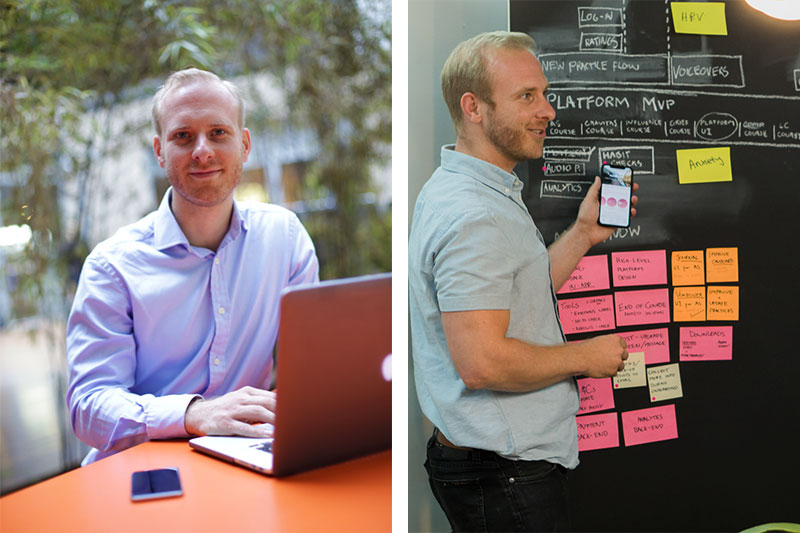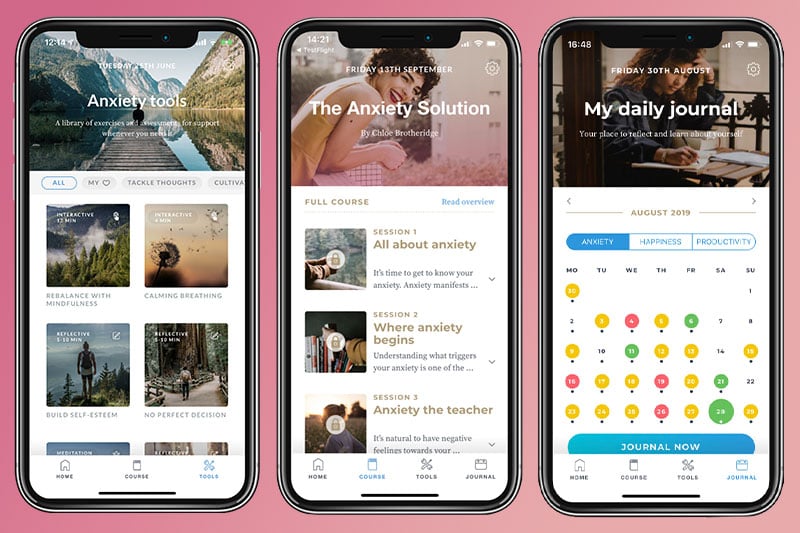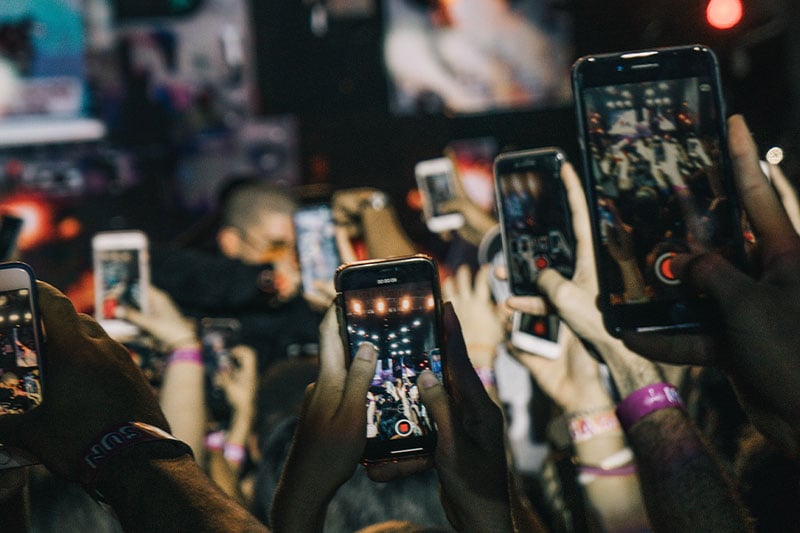Anxiety affects one in five people worldwide. We met with mindfulness expert and previous Head of Research at Headspace Nick Begley to discuss the neuroscience behind anxiety – and how to manage it.
“All of us naturally experience fear,” explains mindfulness expert Nick Begley, the former Head of Research at Headspace. However, when this fear spills over into excess, it can severely impact our lives – anxiety is the most common mental illness globally, affecting an estimated 275 million people worldwide. The WHO reports that the global economy loses an estimated USD 1 trillion annually in lost productivity as a result of depression and anxiety. And it’s getting worse. Global stress levels have reached an all-time high – a phenomenon that has contributed to what many are calling a modern ‘anxiety epidemic.’

Having worked in investment consulting in London for ten years, Nick first came across mindfulness in 2007 as a participant in a research project at the University of California Davis – the largest scientific research study into mindfulness to date. “I ended up being a research guinea pig. They shipped 70 of us off to Colorado to go and meditate for about 10 hours a day in silence for three months. And, personally, I found the whole thing so transformative, I thought, you know what, I will actually help get mindfulness out there. It completely changed the trajectory of my career.” He left his job to retrain at University College London (UCL) in Positive Psychology and Cognitive and Decision Sciences, becoming the Head of Research at Headspace in 2010, wanting to secularise mindfulness so “People realise you don’t have to sit in a loincloth and burn incense. It’s for everyone!” Now the CEO and co-founder of Psychological Technologies, Nick is pioneering the use of technology in anxiety management via mobile apps and has recently launched Calmer You, an app that does just that via easily digestible courses.
He sat down with us to chat through the massive impact technology is having on our anxiety levels – and what we can do about it.
#1
What Exactly is Anxiety?
Defined as ‘a feeling of worry or nervousness,’ anxiety refers to the body’s natural reaction to stress. A temporary emotion, it can manifest in several, subtle forms, ranging from the constant feeling of being on edge to an inability to sleep or excessive brooding. “The simplest way to think about it is that you have an emotional centre of your brain called the amygdala. When you become fearful, that gets fired up, setting off the HPA axis. That then starts to release adrenaline and cortisol into your system,” explains Nick. “When your amygdala kicks off in a healthy, functioning brain, the prefrontal cortex – essentially the content part of the brain – can regulate it; it can push the signal down and reduce the intensity of the amygdala.” However, “When you’re feeling anxious or have an overly active amygdala, it can get kicked off much more easily than with other people, and then you can’t downregulate it.”
Although anxiety can be a normal, healthy emotion, in excess, symptoms of anxiety can indicate an anxiety disorder, which can be diagnosed using the Generalised Anxiety Disorder-7 (GAD-7), a questionnaire that evaluates the severity of an individual’s anxiety-based symptoms including nervousness, restlessness, and irritability. “The severity and the frequency of those are actually how they classify your level of anxiety,” Nick elaborates.
#2
What Are the Biggest Misconceptions About Anxiety?
“I think the biggest misconception
is that people feel like they’re alone.”
“I think the biggest misconception is that people feel like they’re alone,” says Nick. “At any one time, one in five people are suffering from anxiety. So, the first thing to realise is that you really aren’t alone in this. It’s just that people aren’t talking about it.”
Another common misconception is that anxiety is mainly presented physically via symptoms like sweaty palms, shaky knees and quickened breaths. While this may be true for some, anxiety can also manifest as subtle thoughts, emotions and behaviours. “It’s very important to realise there are a number of different components to anxiety,” says Nick. “If you are able to become aware of them and intervene at each level, whether that’s on the emotional, behaviour or thought level, you can then start to combat your physical symptoms.”
You might also like One Man’s Journey: Changing How We Talk About Men’s Mental Health

#3
How Can Mindfulness Help You Manage Anxiety?
“With mindfulness, you’re really
changing your relationship to your thoughts.”
As the practice of maintaining awareness over one’s thoughts and emotions, mindfulness can be used as a technique to self-manage feelings of anxiety. “With mindfulness, you’re really changing your relationship to your thoughts,” says Nick. “Mindfulness strengthens parts of the prefrontal cortex, which helps you to downregulate the amygdala.” When someone is anxious, they can get caught up in a “negative feedback loop where the emotional centre kicks off, it creates negative thoughts, and that actually increases the activity in the amygdala.” Instead, mindfulness retrains your brain to react differently to thoughts that arise, acknowledging them without engaging with them, and letting them go.
With a heavy emphasis on learning to train your attention, mindfulness can have a major impact. “You can start to have more control over what your mind attends to, whether it’s positive thoughts or negative thoughts, or your work, rather than being distracted by Facebook or social media,” says Nick. “Even if someone says something which upsets or angers you, it’s much easier to let go far more quickly.”
Tapping into a neuroscientific concept called the ‘default mode network,’ which kicks in when your mind wanders, Nick explains,“Typically, when our mind wanders, it wanders to thoughts about ourselves. We’re generally pretty self-preoccupied.” When it comes to anxiety, however, the default mode network works against us, creating negative feedback loops that are all about the self. “People who have mental health disorders often have more activation in this default mode network,” he says. “If you have social anxiety, for example, you’ll be anxious about how other people view you: ‘I might look stupid, they might not like me.'” This is where mindfulness comes in. It helps individuals regulate the default mode network, turning it off, and activating the ‘attentional mode network’ instead. In this state, “People are really engaged in something, like athletes. You know when you’re doing work and time disappears, often what you realise is that you completely forget yourself. This sense of self disappears.” Nick elaborates, “When you’ve got a deep level of attention, this attentional mode network is switched on for much longer periods of time. It gets longer and longer before the default mode network switches in and starts firing up a load of thoughts,” allowing an individual to better regulate intrusive thoughts.
#4
How is Cognitive Behavioural Therapy (CBT) different?
Cognitive Behavioural Therapy, or CBT, is a much more hands-on way of addressing anxiety in comparison to mindfulness. As Nick puts it, “It’s really engaging with thoughts and challenging them.” Rather than learning to react differently when thoughts arise, as mindfulness advocates, CBT heads to the root of the problem, teaching individuals to become more aware of their thoughts and thought patterns, and then challenge them. Explaining the concept of the negativity bias, Nick sets out the thinking. “When we were evolving, the ones who heard a rustle in the bushes and assumed the worst were more likely to run away, see another day, procreate and push their genes down the gene pool. There was a natural advantage to being overly pessimistic in the fact that you were more likely to survive. So, it’s natural that we do have this negative bias.”
CBT therapy tries to help people recognise this default reaction and combat it by relearning new thought patterns. “So, when these negative thought traps pop up, you notice that they’re actually unrealistic, and you look for a better way of looking at them.” Helping people notice unhelpful thought traps such as catastrophising, over-generalisation and black and white thinking, CBT is often much more cognitively demanding. “You learn to identify them and go, ‘Well actually, is this really the truth? What’s a better way that I can look at it?’ So, it’s really engaging with thoughts and challenging them.” This requires an in-depth analysis of yourself and is well suited to people who find the stillness required for mindfulness more difficult. “One of the advantages of challenging these thoughts is you’re actually changing your world view,” Nick shares. “Some people feel so restless that it’s very hard to sit down and practice mindfulness. They’re much more cognitive and it might be more helpful for them to do things like CBT.”
#5
What Impact Does Social Media Have on Anxiety?
“The way companies like Facebook, YouTube, and Netflix
are using technology to try to grab people’s attention is
weakening our ability to regulate our emotions and our attention.”
“Nowadays with social media, we are able to compare ourselves to the most attractive people out of seven billion people around the world, and we put a lot of pressure on ourselves to try and live up to those standards,” says Nick. “Obviously, you don’t see a true representation of the majority of people’s lives, and I think this is fueling the anxiety epidemic.” However, the impact of social media goes deeper than that. “The way companies like Facebook, YouTube, and Netflix are using technology to try to grab people’s attention is weakening our ability to regulate our emotions and our attention, and that’s having a massive impact,” he explains. “So, with something like mindfulness, you’re learning to choose what your mind attends to. Whereas on social media, your mind has been taken down a rabbit hole for hours upon hours, and your own muscles and ability to actually regulate your attention starts to reduce.” There may not be a simple solution, but Nick believes, “Ideally, there needs to be some kind of regulation on these companies. A majority of people spend their time on social media apps connecting with each other, but not on a deep level. They’re also looking at other people’s lives, which obviously seem to be fantastic. They don’t see the dark side of it – their downsides, which makes them more human.”

#6
How Can Technology Help?
In some ways, technology is a double-edged sword: “If we use it in the right way, people can have easy access to these tools, and they can start to improve their well-being. But, at the same time, we need to work on being responsible in the way that we use this technology, and companies have to be responsible in the way they’re employing their strategies. A lot of this stuff has to be regulated from the top down.”
Self-care apps, in particular, are a rapidly growing industry, providing individuals with an affordable, and much more accessible, tool to strengthen their emotional regulation: ”In 2018, the revenue from self-care apps grew by 170% over the year, which shows people are engaging more with these techniques,” Nick relates. To that end, he has just launched his new self-care app Calmer You in collaboration with anxiety expert and best-selling author Chloe Brotheridge. Turning self-development books into actionable, app-based courses, he’s incorporated mindfulness and CBT techniques into the app, helping users form positive habits that continue to help them self-regulate their anxiety. “It takes about 66 days to form a new habit,” Nick relates. “But in terms of impact, they’ve shown that practising 10 or even five minutes of mindfulness has a state effect, so you feel better afterwards. But, the more you do that on regular occasions, the more likely it then starts to ingrain as a trait in a habitual way. And the more you do something, the quicker it starts to become a trait.”
With everything from self-compassion exercises to cognitive behavioural therapy, mindfulness techniques to diaphragmatic breathing, the app provides its users with techniques to break down their worries, boost their self-esteem, relieve their physical symptoms of anxiety and help them make decisions. “Each day as you go through the app, you’ll have a very clear focus about a particular topic, which has a practice associated with it,” Nick says. “That’s the key: you learn to apply the skills you’ve learned to your own life and practice on regular occasions. And that’s what creates change.”
Related Articles
Female Fitness Warrior Talks Strength, Resilience & Career After Battling Cancer
7 Best Apps Helping You Keep Your New Year’s Resolutions on Track





